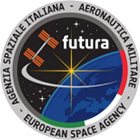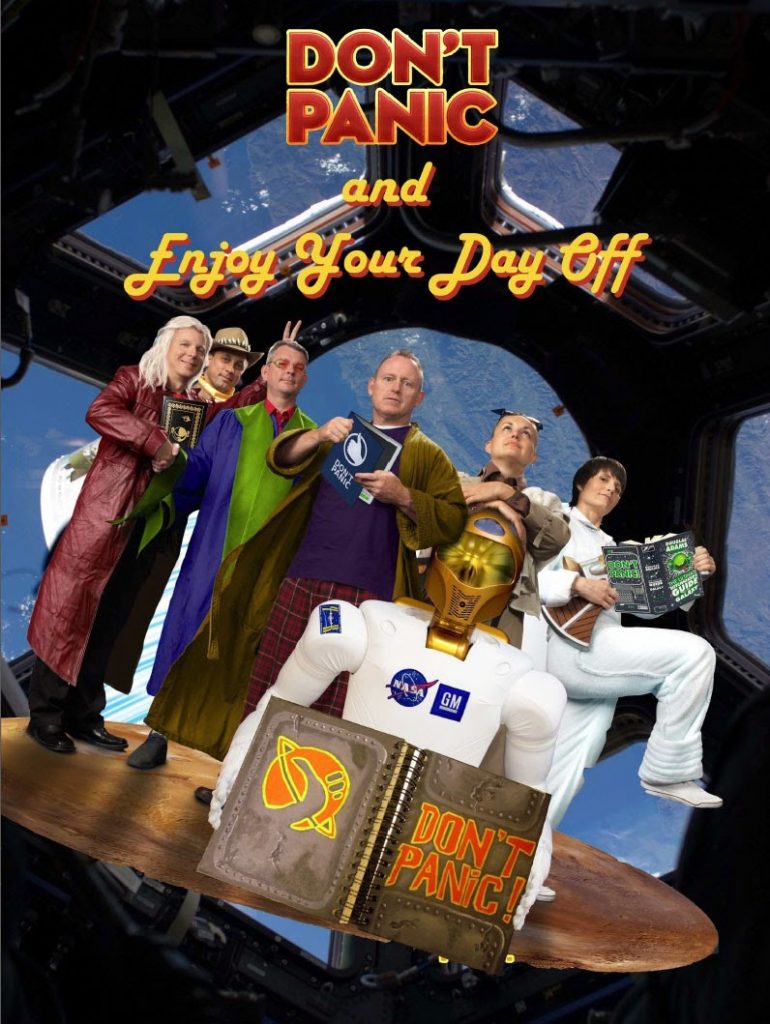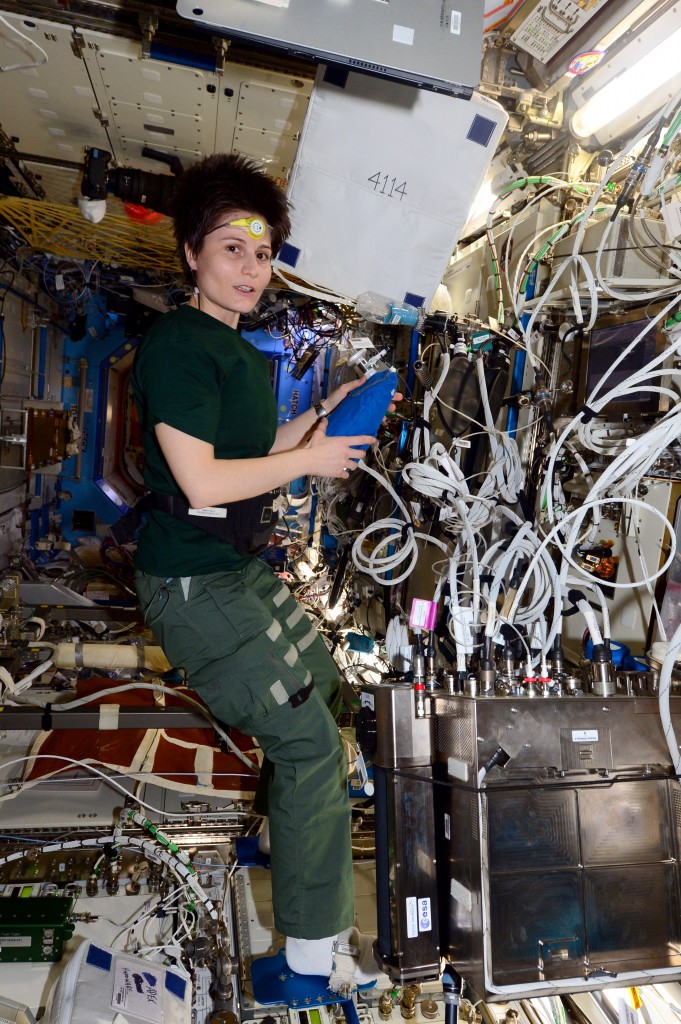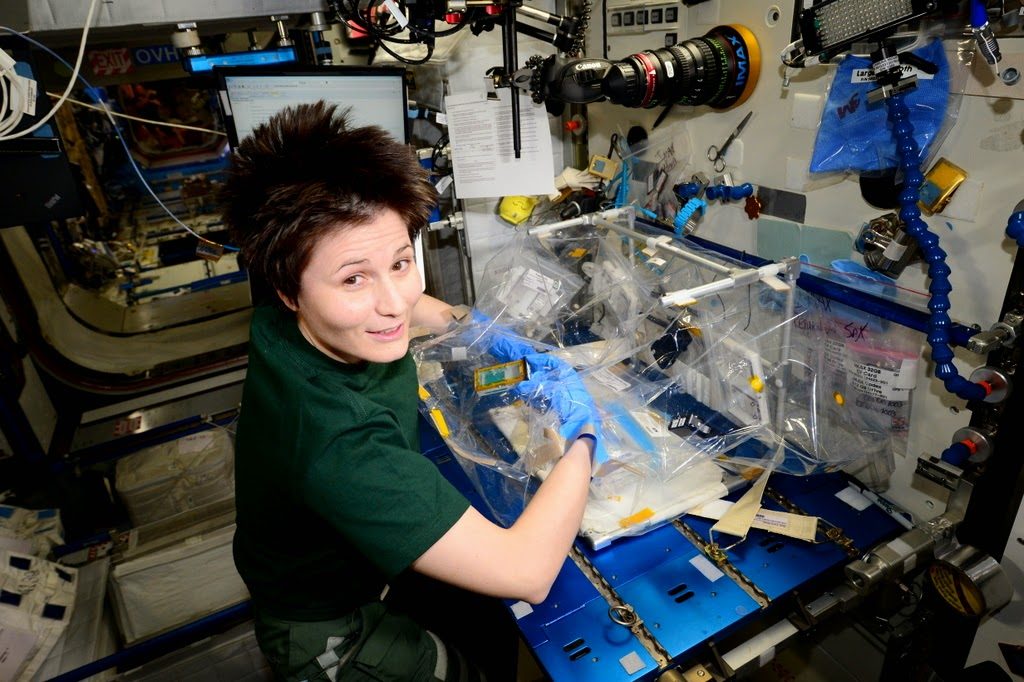L+100, L+101: Three spacewalks in 8 days
Thursday
02:18
The Logbook is back!
Sorry for the very long Loss of Signal, it’s been a busy time: three spacewalks in 8 days can really fill your days and I felt that I needed to focus on my task 100%.
Having to run several hours of airlock ops and get two crewmates “out the door” safely and as quickly as possible is something that commands attention: by far the most demanding thing I have done on orbit and, the first time, definitely somewhat stressful.
Spacewalks are usually covered quite in detail on the internet, so I’m sure you guys already know more than I could possibly tell you. And as far as my job as IV is concerned, if you’re curious you can take a look at some training logbooks about Prep-and-Post classes, where we train airlock ops and pre-breath protocols. Check out for example Logbook L-70.
Of course, some things are hard to practice on the ground. Take the SAFERs, for example, the jetpacks that are attached to the EMU suits for an emergency self-rescue in case of detachment from structure: on the ground we learn how to operate the latches that keep them secured to the suit, but it’s a whole different story to actually handle suit and SAFER in space. Heavy, bulky things don’t have weight up here, but they sure still have mass, hence inertia!
Anyway, everything went well, Butch and Terry did a stellar job outside, Anton was a precious help in the airlock and now we’re all catching our breaths as we settle into a less hectic work pace.
Also, we’re approaching fast the end of Expedition 42, which means that Butch, Sasha and Elena are getting ready for their fiery ride back to planet Earth next week.
Terry, Anton and I will be on our own up here for a couple of weeks, before Scott, Misha and Gennady join us towards the end of March.
Yesterday our soon-to-depart crewmates actually put on their Sokol suits for their pre-reentry leak checks and I have spotted Elena and Sasha practicing the Soyuz manual reentry on a simulator in the Service Module.
And we’re getting return cargo ready: today, for example, I took water samples from all our potable water delivery stations and stowed them for return on Soyuz.
Preparations for the next crew’s arrival have also begun. Yesterday I worked on stowing some cargo delivered on the Russian Progress resupply vehicle, which included Scott’s clothes and hygiene items.
We have our little space wardrobe in Node 2, close to our sleeping cabins: each one of us has a big rigid bag with our personal clothing supplies, mostly organized in Ziplocs that cover two weeks each (we call those “bricks”).
Butch, efficient as always, had already cleared his bag, so Scott… if you happen to be reading… your clothes are already nicely organized in Node 2 overhead! Not sure that they are enough for a year, though: I bet you’ll have more coming along the way.
Hey, by the way, yesterday was our 100th day in space! Well, technically that’s true only for me, since Terry and Anton had been in space before, but for sure it was our 100th day in space together. A bit scary, isn’t it? Compared to the time behind us, the time we have left already looks little, only a couple of months left.
Of course there are things from my Earthling life that I miss – a shower being pretty high on the list – but it will be really hard to leave the Space Station. In the past 100 days I have gone from uncontainable excitement and constant discovery to familiarity and a sense of quiet affection for the Station itself, our crew and the teams on the ground spread all over the world with whom we interact every day. It feels like home and, by the way, a home in which you can float and that offers an unbeatable view out of the window!
Futura mission website (Italian): Avamposto42
avamposto42.esa.int
#SamLogbook #Futura42
(Trad IT) Traduzione in italiano a cura di +AstronautiNEWS qui:
https://www.astronautinews.it/tag/logbook
(Trad FR) Traduction en français par +Anne Cpamoa ici: https://spacetux.org/cpamoa/category/traductions/logbook-samantha
(Trad ES) Tradducción en español por +Carlos Lallana Borobio aqui: https://laesteladegagarin.blogspot.com.es/search/label/SamLogBook
(Trad DE) Deutsch von https://www.logbuch-iss.de
05/03/2015







 My own background in science is limited – what you get with an engineering degree – and if I had chosen an education in science, instead of engineering, it would have been physics, so even then I would have hardly had a chance to work with cell cultures and multi-generational experiments on fruit flies and worms. And I’m not sure that I would be cut for it as my full-time job – it probably requires more patience than I possess – but I do have a lot of fun working on these experiments here on ISS!
For example, on Monday I got to work again on the experiment “Epigenetics”. My little friends in this case are not fruit flies, but another animal commonly used in research as a model for larger organisms: a millimeter-long worm called Caenorhabditis Elegans, for friends C. Elegans. And just like with the fruit flies, we want them to make babies: a total of four generations will grow onboard and specimen of each generation (adults and larvae) will be preserved in the freezer for return.
Dragon brought up the C.Elegans in starter syringes and I injected them into culture bags last week to start incubation. Then on Monday I extracted the babies using a special syringe equipped with a filter, that would not let the bigger adult worms go through. The first generation adults remained in the original culture bag and were frozen, while I inserted the second generation babies into another culture bag to let them further incubate. The purpose of the experiment, as the name suggests, is to study inherited epigenetic changes: that means changes in gene expression, but not in the DNA itself. Let’s put it this way: the environment cannot change the genes in your DNA, but it can affect how your genes are expressed, or “activated”. The worms will adapt to weightlessness and that will cause changes in their gene expression, so the question is: how, if at all, will these changes be inherited by the offspring?
Fascinating, isn’t it?
My own background in science is limited – what you get with an engineering degree – and if I had chosen an education in science, instead of engineering, it would have been physics, so even then I would have hardly had a chance to work with cell cultures and multi-generational experiments on fruit flies and worms. And I’m not sure that I would be cut for it as my full-time job – it probably requires more patience than I possess – but I do have a lot of fun working on these experiments here on ISS!
For example, on Monday I got to work again on the experiment “Epigenetics”. My little friends in this case are not fruit flies, but another animal commonly used in research as a model for larger organisms: a millimeter-long worm called Caenorhabditis Elegans, for friends C. Elegans. And just like with the fruit flies, we want them to make babies: a total of four generations will grow onboard and specimen of each generation (adults and larvae) will be preserved in the freezer for return.
Dragon brought up the C.Elegans in starter syringes and I injected them into culture bags last week to start incubation. Then on Monday I extracted the babies using a special syringe equipped with a filter, that would not let the bigger adult worms go through. The first generation adults remained in the original culture bag and were frozen, while I inserted the second generation babies into another culture bag to let them further incubate. The purpose of the experiment, as the name suggests, is to study inherited epigenetic changes: that means changes in gene expression, but not in the DNA itself. Let’s put it this way: the environment cannot change the genes in your DNA, but it can affect how your genes are expressed, or “activated”. The worms will adapt to weightlessness and that will cause changes in their gene expression, so the question is: how, if at all, will these changes be inherited by the offspring?
Fascinating, isn’t it?